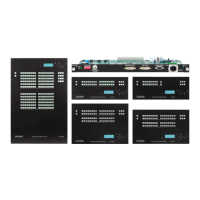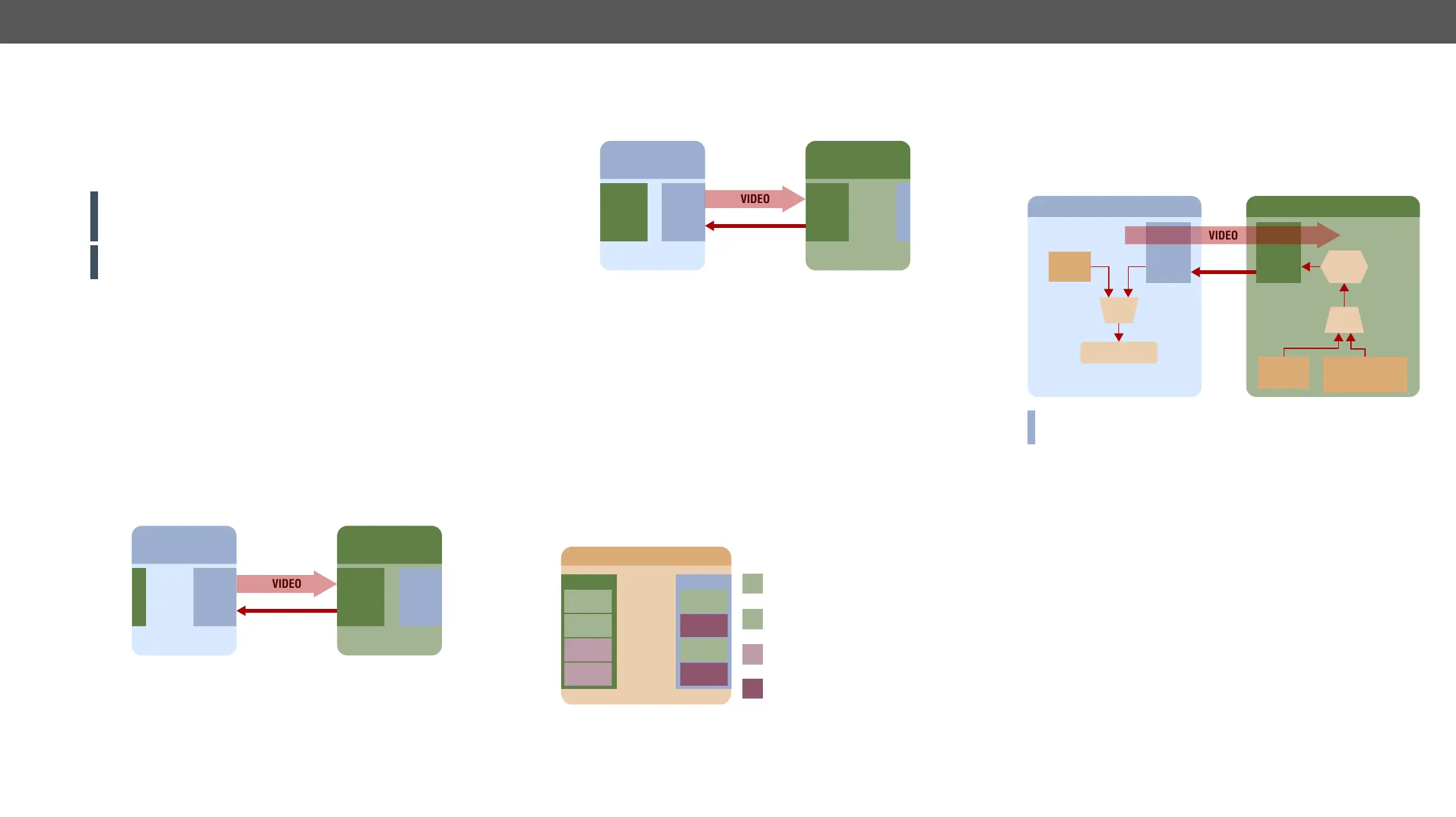10. Technologies MX-FR Series Modular Matrix Frames – User's Manual 130
The RICOD Technology
Introduction
The main goal of Remote Input Control Over DDC (RICOD) is to control
the remote Lightware transmitters attached to a router (local device).
The control means input switching (select video and audio sources)
ATTENTION! There is no possibility to send other kind of commands,
including Lightware protocol commands or any other character
sequence. The "RS-232 extension" function is out of the question.
ATTENTION!
proprietary function. It works only with Lightware devices.
Operation
Master and Slave Modes
First of all, it is important to understand the direction of RICOD and
the working modes. Lightware's RICOD-capable devices are able to
send out remote switching commands on their video inputs towards
remote switching commands on their video outputs from another
or a Slave:
Master
If a device sends out RICOD commands over its video input it works as
a Master, like the device on the right side. Lightware matrix routers
(e.g. MX-FR frames with CPU2) work as RICOD Masters typically.
Slave
If a device receives RICOD commands over its video outputs it works
as a Slave, like the device on the left side. In this case, the devices are
capable of receiving commands over their outputs (e.g. connected to
another Lightware device) if the function is enabled.
RICOD-capable
device’s output
Outputs
Slave
Lightware RICOD-
capable device
Inputs
Master
Outputs
VIDEO
RICOD
This means that the remote device is capable of being controlled from
that given output. (The command affects only that output where the
UMX-TP-TX100) work as RICOD Slaves typically.
Factory Defaults
from the Master devices are accepted and executed) and the Master
mode is always disabled. That state is realoded when factory default
settings are restored by protocol command (FACTORY=ALL). For
manual of the devices.
Enable / Disable RICOD
Users can enable or disable the RICOD function for each input and
output video port separately. For example, one can enable the RICOD
on the 1st and the 2nd video input and the 1st and the 3rd video output
port. RICOD is disabled on the other video input and output ports;
green.
every Lightware device. (For more information see the RICOD Related
Commands section.)
RICOD-capable
device’s output
Outputs
Slave
Lightware RICOD-
capable device
Inputs
Master
Inputs
VIDEO
RICOD
Master
Lightware RICOD-capable device
Inputs
Slave
I1
I2
O1
O2
Outputs
O3
I
Legend:
RICOD is enabled (can control)
over this input port
O
RICOD is enabled (can be
controlled) over this output port
I
RICOD is disabled (cannot
control) over this input port
O
RICOD is disabled (cannot be
controlled) over this input port
I3
I4 O4
Validity of RICOD
The last command will be saved for each input and will be preserved
until a new command arrives or until the function is disabled. If the
remote controlled device is restarted, replaced or disconnected and
connected again, then the command will be executed again. The
command will take effect even if the local device (e.g. the MX-FR
matrix with CPU2) is restarted or the function is enabled again.
INFO: The communication between the devices is uni-directional,
so there is no feedback from the remote controlled device.
Locking the Remote Device
The intention of this feature is to prevent accidental or unwanted
switching when the remote device is installed near to the end-users.
The remote device can be locked by the local device via a RICOD
command. The behavior is different for the video routers and for the
extenders:
by the RICOD function, then it will disable the front panel switching
buttons. The buttons are disabled until the device is disconnected
(connection is detected by the Hotplug detect signal – which is carried
by the DDC CAT cable when using CATx extenders) or the remote lock
command is cleared by the local device. This can be done by turning
off the RICOD function or by turning off only the lock command.
If a new device is connected which does not support RICOD commands
then the remote lock will be disabled.
Note that when the buttons are disabled, then they do not react at all -
switching and unlocking are also impossible.
RICOD slave device
SLAVE
enable
Output
VIDEO
RICOD
Input selection
&
RICOD master device
MASTER
enable
Remote source
selection settings
Input
&
RICOD
BANK*

